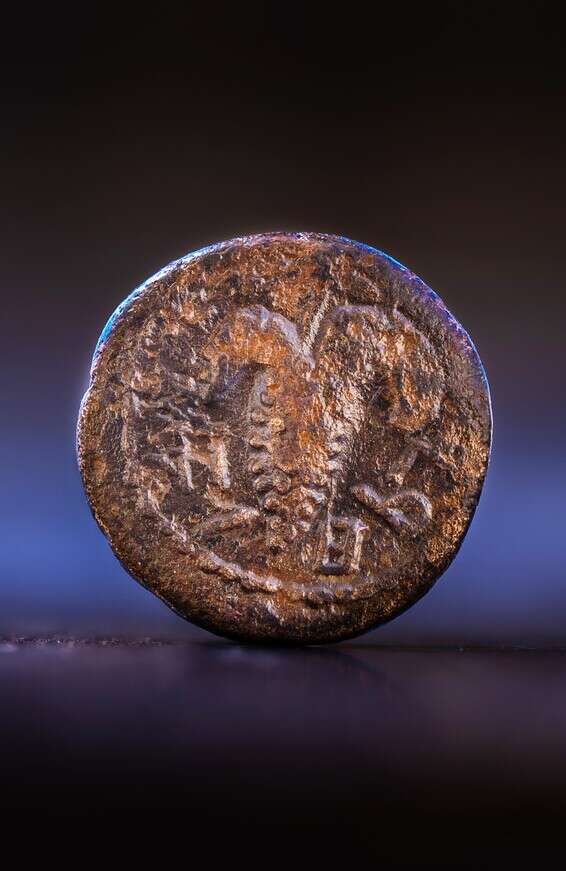The Israel Antiquities Authority unveiled a bronze coin from the Bar Kokhba uprising, with the caption "Second Year to Israeli Liberty" • This is a fourth coin of its kind
A rare coin from the Bar Kochba revolt was discovered near the city of David
Photo:
Kobe Harati, City of David
On the occasion of Lag Ba'Omer, the Israel Antiquities Authority reveals to the public a rare bronze coin from the Bar Kochba rebellion (around 132 AD), which was discovered in archeological excavations at the William Davidson Archaeological Garden, managed by the Jewish Quarter Rehabilitation and Development Society in Jerusalem and located between the Temple Mount and the City of David. The excavations are being initiated by the Israel Antiquities Authority and funded by the association of the City of David (Elad), which operates the site. One side of the coin is decorated with a cluster of grapes, and the inscription "Return to Israel" (Second year of Israel's liberty) appears, while on the other side appears the Tamar tree and the caption. Jerusalem'.
Coins from the Bar Kochba rebellion, which declared the purpose of the rebels - to liberate Jerusalem from the Roman occupier after the destruction of the city, are known in archeology. Finding these coins helps researchers draw the map of the rebellion some 1,900 years ago. It is interesting that the rebels used to coin the insurgency coins on coins of the Roman government whose faces were desecrated or corrupted, perhaps out of defiance of the Roman conqueror. The coins of the rebellion bore the facade of the Temple, trumpets, harp, violin and inscriptions: "Galat Yisrael" and "Herut Israel."
Dr. Donald Zvi Ariel, head of the Israel Antiquities Coin Industry, examined more than 22,000 coins discovered in archeological excavations in the Old City area of Jerusalem. This study shows that only four of them date to the Bar Kochba revolt. Kochba found outside of Jerusalem The current currency is the only one on which the word Jerusalem, found in ancient Jerusalem, is the fourth currency within the Old City.
Despite their desire to do so, the Bar Kokhba rebels failed to penetrate the realm of ancient Jerusalem. Against this backdrop, the question arises as to how four coins from the revolt period still made their way into the city. The site's excavators, archaeologists Moran Hajbi and Dr. Joe Uziel of the Antiquities Authority, suggest that the coins were probably brought to Jerusalem where the Legion Camp was, probably, by Roman legions of the Tenth Legion, who took part in the suppression of the rebellion, and preserved the coins found on the battlefields. As souvenirs.
Archaeological and historical research, based on the testimony of Roman historian Cassius Dio, accepted that Bar Kochba rebellion broke out in 132 CE, after Emperor Hadrian declared the establishment of a Roman colony called "Ilya Capitolina" for the destruction of Jewish Jerusalem. The founding of the Roman city and the construction of an idol temple in the place of the Jewish temple, in addition to religious decrees, agitated the remaining Jewish population in Judea, which opened a wide revolt against the Roman rule led by Shimon Ben-Kusiba, known as "Bar Kochba." The revolt itself lasted about five years, causing heavy casualties among the Roman legions to the point Thus, large units of army from across the Roman Empire were forced to complete the ranks, and the rebellion ended with the destruction of hundreds of Jewish settlements and villages, which took part in the uprising, but Bar Kochba's image remained engraved in the memory of the people as a historical hero.








